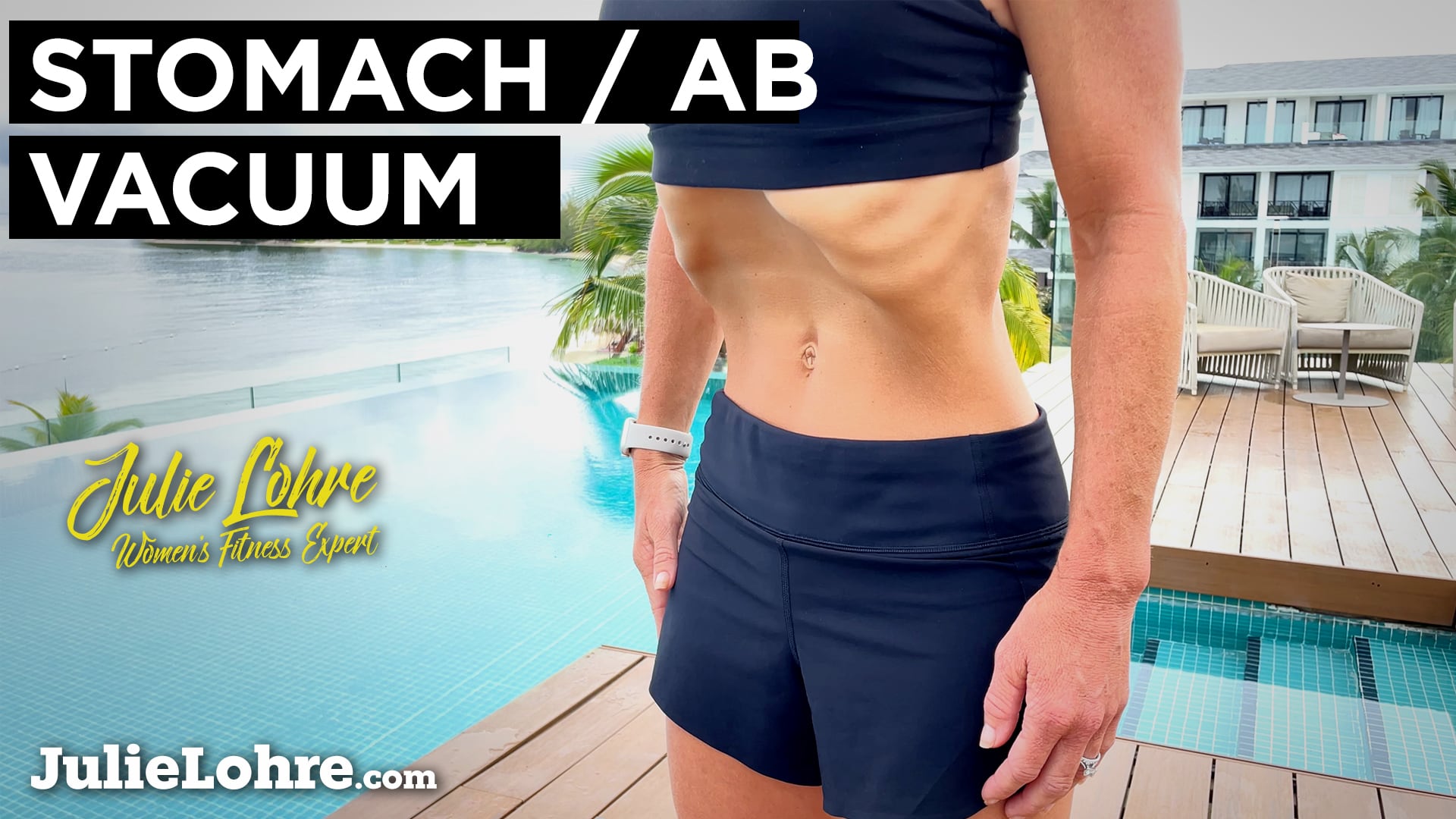Stomach Vacuum Exercise | Shrink your waist with Ab Vacuums
Ditch ridiculous waist trainers & include the stomach vacuum exercise instead to shrink your waist! Find out how & why to do stomach vacuums or ab vacuums!
In this article, I will share with you how to do the stomach vacuum exercise or ab vacuum exercise, what the benefits are for women to do stomach vacuums, and how this challenging exercise can help shrink your waist and heal diastastis recti.
So, most everyone is familiar with the traditional sit up or crunches as a way to work those ab muscle. Women in search of six pack abs have been trying movements like sit-ups for ages and get frustrated when they are not seeing belly fat disappear or their waist measurement shrink. While of course, we all know that abs are made in the kitchen, there are exercises that can help draw the ab muscles in tighter and actually bring down the waist measurement naturally.
Enter stomach vacuums. Heralded by many ob/gyn’s for their ability to help postpartum women heal from the abdominal separation that can occur from carrying a baby, Diastatis Recti, ab vacuums are also being recognized by the fitness community in general as a way of tightening that challenging core area.
The nomenclature might sound corny, but for many women after an hourglass figure are ditching the waist trainers and instead stomach vacuums are becoming a consistent part of their ab workout routine.
What is the Stomach Vacuum Exercise?

The stomach vacuum, also known as the ab vacuum is an isometric contraction exercise (tensing a muscle without moving it) of the transversus adbominus. Strengthening the transversus abdominus by performing the stomach vacuum can create a stronger valsalva maneuver (think powerful exhale necessary to contract a muscle during a heavy lift or workout).
It is a great exercises to help shrink your waistline in a short amount of time. While some tout that ab vacuums can knock off inches within a couple short weeks using the stomach vacuum exercise, to really see results, it will take consistent practice along with an awesome nutrition plan.

Why should you do Stomach or Ab Vacuums? What are the benefits?
Strengthening this area and training these abdominal muscles will help you gain more control of your core and create a slim and attractive mid section.
- Teaches muscle engagement and contraction by working deep core muscles. Properly contracting your core muscles in those challenging ab workouts can be difficult and takes practice. By adding stomach vacuum exercises into your routine, you isolate the region and create a mind-muscle connection that can be tapped into with other ab exercises.
- Help alleviate lower back pain and support proper posture. By working the muscles that support your core and lower back, especially the transversus abdominis, you can take pressure off your spinal column.
- Can keep you from future injury. The skill of learning to properly contract your core abdominal muscles can translate into lower injury risk in many aspects of life including when twisting from side to side or lifting overhead.
- Provide the visual appearance of a reduced waistline. Because your transversrsus abdominis muscle in effect covers your midsection, tighten that muscle upward and inward offers a “cinching” effect which gives the look of a tinier waist.
- Heal Diastasis Recti. When postpartum women suffer from the ab muscle separation that commonly happens from carrying a baby, exercises that cause you to press outward with the core muscles like traditional crunches and sit ups can make the problem worse. Instead, movements like stomach vacuums that draw the muscles back together, can lessen that gap and promote healing.
Where did the Stomach Vacuum exercise originate?
While the exact origins are not know, the ab vacuum was used in early days of bodybuilding when names like Arnold, Lou and Sergio or Cory Everson & Rachel Mclish. These athletes were known for a perfect V-Taper and used this exercise frequently to trim and train their mid sections.
Today athletes and bikini fitness models that strive for the most narrow waist possible and an hour glass shape are looking to stomach vacuums instead of corny and potentially dangerous waist trainers.

Why are Ab Vacuums so hard for women to do?
There is a practice involved in getting these right and at times you might get frustrated by the maneuver, but in time you’ll see results and be able to perform the vacuum with ease. Once mastered, it can be perfected standing, kneeling or seated in a prone position. No more excuses not to do ab training since this can literally be done anywhere.
Ready to shrink your waist through a comprehensive and lasting approach? Find out how women that want to look like fitness models do it!
How to do the Stomach Vacuum Exercise




While there are many ways that you can do stomach vacuums, I prefer to start standing.
- Begin standing straight with your shoulders level and chest slightly lifted. Tailbone should be gentle turned under in a soft anterior pelvic tilt.
- Deeply inhale the air into your lungs pressing outward gently on diaphragm allowing your stomach to slightly distend.
- As you exhale, draw your abdominal muscles upward and inward toward your spine as hard as you can holding for several seconds at a time. Try to maintain shallow breathes throughout the vacuum. Do not hold your breath.
- Work toward holding the vacuum for 10-15 seconds and repeat that movement 3-5 times to. Over time, you will visibly see the results as the vacuums effectively shrink your waist.

Stomach Vacuum
Also known as Ab Vacuums


